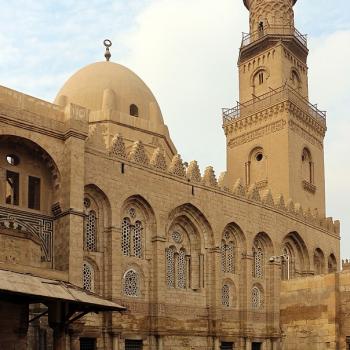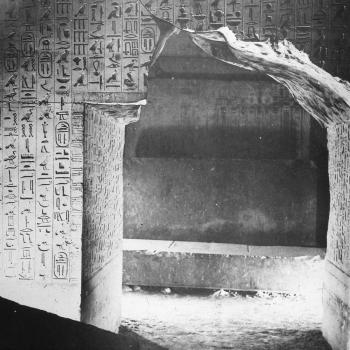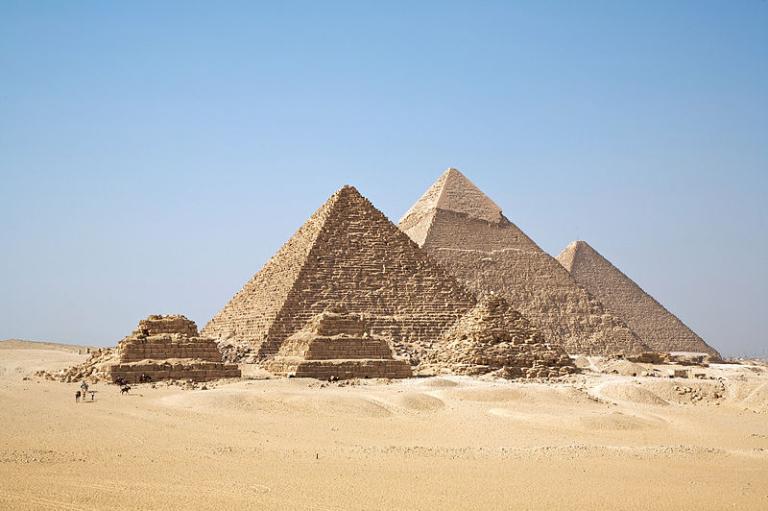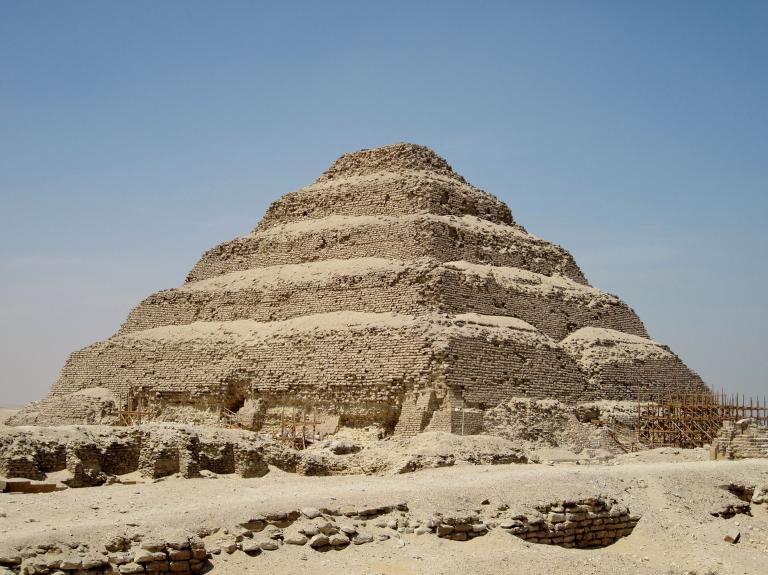
(Wikimedia Commons public domain image)
A new publication has come from Professor Matthew Bowen, via the Interpreter Foundation: Ancient Names in the Book of Mormon: Toward a Deeper Understanding of a Witness of Christ:
The names of individuals, places, and peoples in the Book of Mormon are strong evidence of its authenticity as an ancient scriptural record. But these names are more than mere ornaments. By reading carefully and using our knowledge of ancient Hebrew and Egyptian—the languages Book of Mormon writers claimed they knew and used—we can locate passages where names figure crucially into the meaning of the text and strengthen its impact. Sometimes, wordplay on these names illuminates important themes in a given book. These findings are consistent with what we find throughout the Hebrew Bible, where names and their meanings (real and perceived) were integral to narrative, prophecy, and poetry. As a follow-up to Name as Key-Word (2018), Ancient Names in the Book of Mormonexplores many such examples and demonstrates how they contribute to our understanding of the Book of Mormon’s witness of Christ in its ancient context.

Wikimedia Commons public domain image
I’m afraid that I’ve fallen behind in calling to your attention newly published items on the website of the Interpreter Foundation. My schedule has been far too demanding — from pre-dawn until late at night — and my internet access hs been too sporadic to permit me to keep up. In fact, I’m somewhat behind in my blogging altogetherSo I try, now, to note some of the things that have been published in recent days:
“Exploring the Complex Book of Mormon,” written by Brant A. Gardner
Review of Avram R. Shannon and Kerry Hull, eds., A Hundredth Part: Exploring the History and Teachings of the Book of Mormon (Provo, UT: Religious Studies Center, Brigham Young University, 2023). 374 pages, $29.99 (hardback).
Abstract: This volume collects papers published in multiple venues over a wide time span. A diligent researcher might find all of them, but that difficult search has been done. The included papers represent multiple ways of approaching the Book of Mormon and therefore provide the reader with a rounded perspective on how and why a careful reading should be done.
“The Temple: Ancient and Restored: What Did Joseph Smith Know about Modern Temple Ordinances by 1836?” written by Jeffrey M. Bradshaw
Part of our book chapter reprint series, this article originally appeared in The Temple: Ancient and Restored, Proceedings of the Second Interpreter Matthew B. Brown Memorial Conference “The Temple on Mount Zion,” 25 October 2014 (2016) edited by Stephen D. Ricks and Donald W. Parry. For more information, go to https://interpreterfoundation.org/books/the-temple-ancient-and-restored/
Conference Talks: Ruth: An Allegorical Reading, presented by Mack Stirling
The book of Ruth easily lends itself to an allegorical interpretation, which corresponds in many ways to the endowment. Ruth, typifying any individual or Israel as a whole, undertakes and completes a journey to the Lord, typified by Boaz, the kinsman-redeemer. Ruth goes from emptiness/famine and the bitterness of family death to fulness and renewed family. As Ruth demonstrates obedience, initiative, and creativity, her ever strengthening relationship with Boaz (kinsman-redeemer) is betokened by intermittent gifts of food/grain (word of God, spiritual nourishment) from Boaz, which go beyond the requirements of the law. Finally, after washing, anointing, and putting on special clothing and under the cover of a night-veil Ruth achieves union with Boaz, the kinsman-redeemer. Afterwards, Boaz makes sure there is no legal claim to prevent his marriage to Ruth, Ruth brings forth a son, and she is acclaimed a mother in Israel.
This presentation was originally given on Saturday, 7 November 2020, at the Interpreter Foundation’s 2020 Temple on Mount Zion Conference.
During the 8 October 2023 Come, Follow Me segment of the Interpreter Radio Show, participants Terry Hutchinson, John Gee, and Kevin Christensen, along with special guest Malcolm Adcock, discussed New Testament lesson 45, “Jesus Christ, ‘the Author of Eternal Salvation’” covering Hebrews 1-6. Their discussion has now been archived in an archived recording that has been edited in order to remove commercial breaks.
The other segments of the October 8 radio show can be accessed at https://interpreterfoundation.org/interpreter-radio-show-october-8-2023.
The Interpreter Radio Show can be heard on Sunday evenings from 7 to 9 PM (MDT), on K-TALK, AM 1640, or you can listen live on the Internet at ktalkmedia.com.
Come, Follow Me — New Testament Study and Teaching Helps: Lesson 45, October 30 — November 5
Hebrews 1–6 — “Jesus Christ, the Author of Eternal Salvation”
As he has been regularly and generously doing for years now, Jonn Claybaugh offers concise notes to assist teachers and students of the “Come, Follow Me” of the Church of Jesus Christ of Latter-day Saints who follow the website of the Interpreter Foundation.
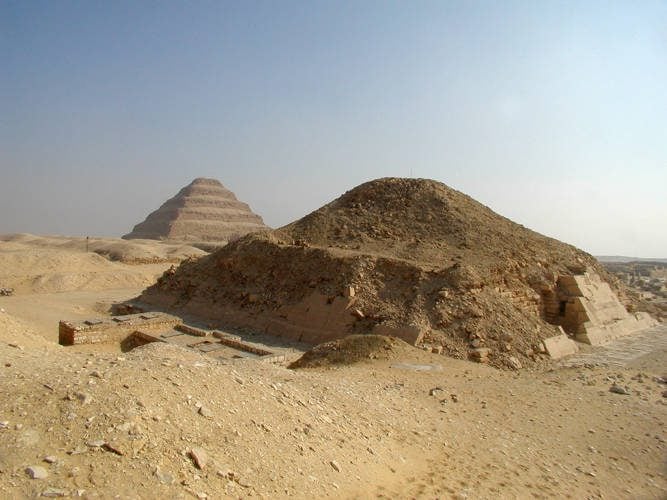
(Wikimedia Commons public domain image)
Saturday began very, very early for us. We caught a morning flight from Luxor to Cairo, and then drove directly from the Cairo airport to المتحف المصرى الكبير (the Grand Egyptian Museum, or GEM), which sits near the Giza Pyramids Plateau. Every year for the several years, the GEM has been about to open. It’s still not open but, for the first time, we were able to enter into the large open area at the middle of it, which features the enormous statue of Ramses II that long stood before the Ramses train station. The GEM is magnificent, and vast. And I predict that, when and if it ever does open, it will instantly rank among the world’s greatest museums.
Thereafter, we had lunch at Mawlana’s, a place to which we’ve taken previous groups. It offers really good Egyptian grilled meats and other traditional foods. Then it was off to the surprisingly meager remains of ancient Memphis, the capital of Egypt during the Old Kingdom, and from there to Saqqara, on the opposite — the west — bank of the River Nile, its original necropolis. There, we looked at the earliest true pyramid, the famous Step Pyramid of King Zoser (or Djoser), and at the largely ruined but hugely important pyramid of Unas, where the fundamentally important Pyramid Texts were first found. Finally, after looking into the beautifully sculpted tomb of the princess Edut or Idut — a close Egyptian artist friend of ours had a cat named Edut — we went to the Akhenaten carpet school. It’s a place where we have purchased several carpets in the past but, this time, I withstood temptation. I wanted to prove to myself that I could do it. And, anyway, we’ll be back again in January!
Written in Cairo, Egypt, but posted from London, England




